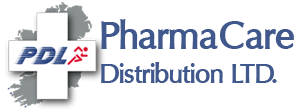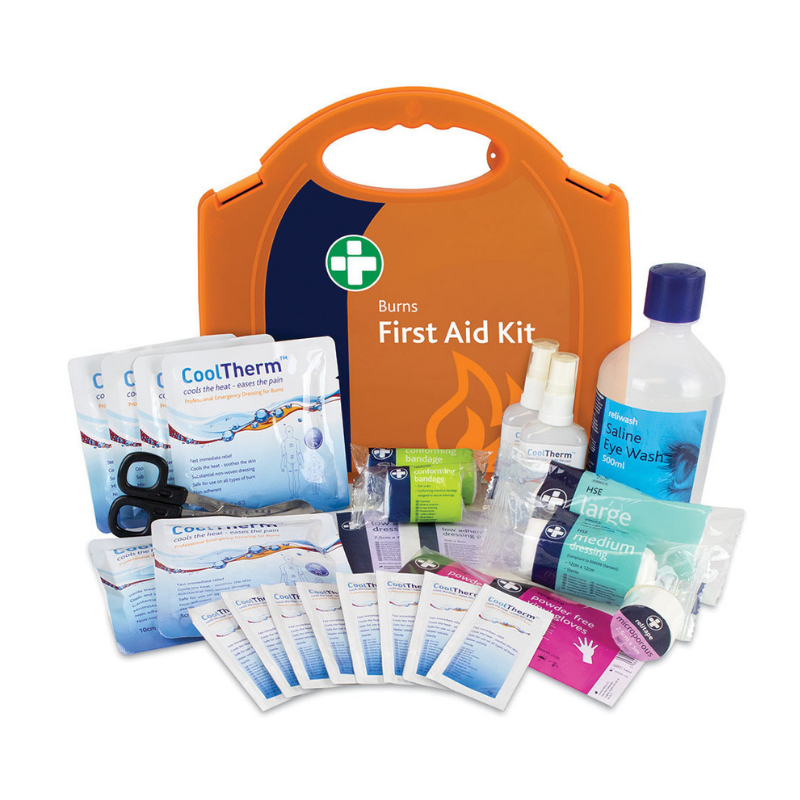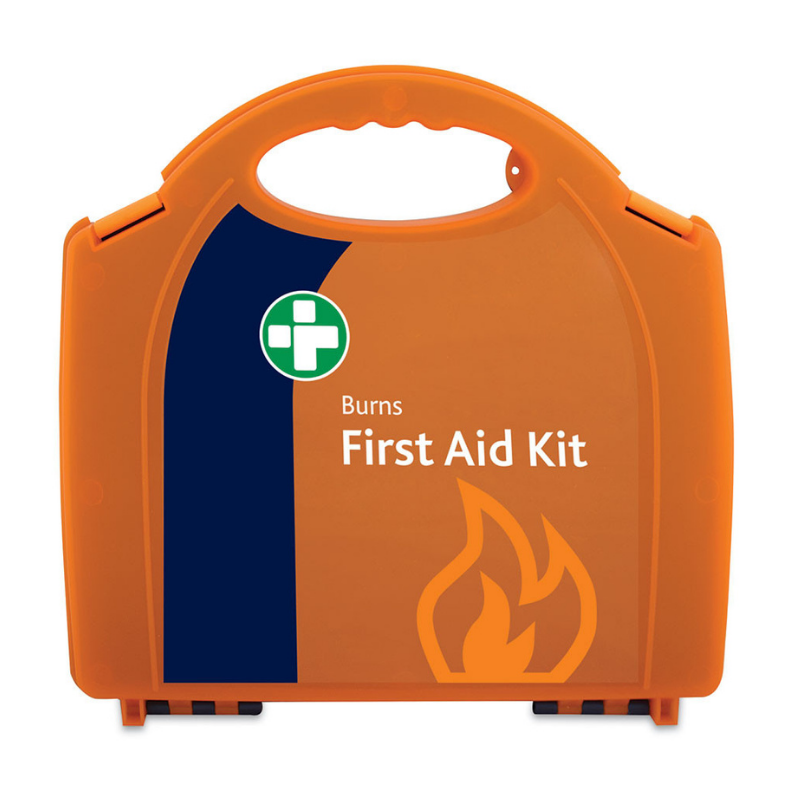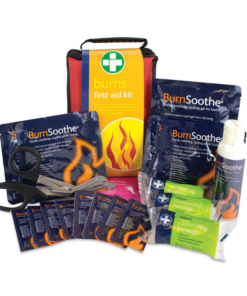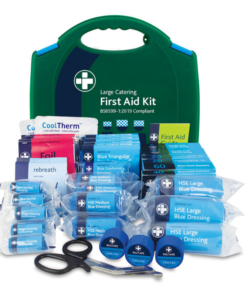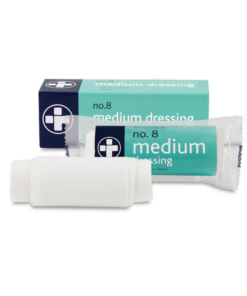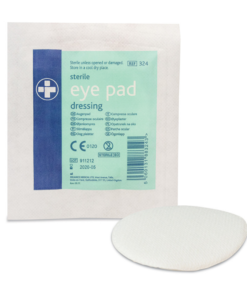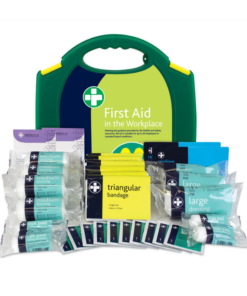Description
Description
This Professional Burns Kit from Reliance Medical is a spectra burns system that meets all current Guidelines. The kit is specifically stocked for treating burns and provides fast and effective treatment. This professional burns kit contains CoolTherm Dressings and Gel, as well as a broad range of bandages, dressings and accessories. This kit comes in an orange integral aura box and includes an integral bracket.
The unique benefits of the First Aid System ensure you have everything you need to meet your regulatory requirements in one simple modular solution:
• First Aid guidance is provided in an illustrated format to assist in relevant first aid measures
• The primary kit in any Spectra First Aid System panel is securely mounted to the panel yet can be quickly released and meet all the current national standards for workplace first aid provision
• Accident Books are conveniently stored to remind first responders of their regulatory requirement to record workplace accidents at the point of an incident
• First aid kits are supplied complete with a security seal, so Health & Safety Managers can easily monitor first aid usage
The Spectra range is customisable to fit within any environment. It’s easy to match the panels required with the level of risk in any workplace. Each panel will interlock with others to provide a comprehensive and complimentary first aid solution. The carefully thought out design makes products easily identifiable in an emergency and easy to access when you need them. Products can either be taken directly from each panel, or the appropriate kit can be removed and taken to the casualty. The modern and smart design will feel equally at home in any office setting or warehouse.
The Spectra first aid kits are made from high quality ABS plastic, which not only means that they looks great, they are also durable and strong enough to last in tough environments. Each panel contains useful product information, a primary kit, designed for the intended location, and supplementary products to enhance the practicality of the panel. At a glance, you can be confident that all primary Spectra kits are compliant by using the included security seal. The security seal can easily be broken by hand in the case of an emergency and, visibly indicates that components of the kit may be missing if it has been removed.
The Professional Burns First Aid Kit Contains:
- 2 x Burn Dressings – 5 x 15cm
- 4 x Burn Dressings – 10 x 10cm
- 1 x 60ml Burn Gel Bottle
- 8 x 4g Burn Gel Sachets
- 1 x Conforming Bandage – 5cm x 4m
- 2 x Conforming Bandages – 7.5cm x 4m
- 1 x 500ml Eye Wash Bottle
- 1 x Guidance Leaflet
- 2 x Pairs of Powder-Free Gloves
- 2 x Low Adherent Dressing Pad – 5cm x 5cm
- 2 x Low Adherent Dressing Pad – 7.5cm x 7.5cm
- 1 x Large HSE Dressing – 18cm x 18cm
- 1 x Medium HSE Dressing – 12cm x 12cm
- 1 x Shears
- 1 x Microporous Tape – 2.5cm x 5m
All medical devices in the Burns First Aid Kit are CE marked.
Size: 27cmH x 29.5cmW x 10cmD.
Uses
The Professional Burns Kit is used for the treatment of minor burns and includes various sized dressings to relieve pain, cool, and comfort.
Application
What to do in an emergency
Priorities:
• Assess the situation – do not put yourself in danger
• Make the area safe
• Assess all casualties and attend any unconscious casualties first
• Send for help – do not delay
Check for a response:
• Gently shake the casualty’s shoulders and ask loudly: Are you all right?
• If there is no response, your priorities are to:
o Shout for help
o Open the airway
o Check for normal bleeding
o Take appropriate action
Follow the A, B, C’s:
A: Airway
• To open the airway, place your hand on the casualty’s forehead and gently tilt the head back
• Lift the chin with two fingertips
B: Breathing
• Look, listen and feel for normal breathing for no more than 10 seconds:
o Look for chest movement
o Listen at the casualty’s mouth for breath sounds
o Feel for air on your cheek
• If the casualty is breathing normally:
o Place in the recovery position
o Get help
o Check for continued breathing
• If the casualty is not breathing normally:
o Get help and call for an AED if available
o Start chest compressions
C: CPR
• To start chest compressions, lean over the casualty and with your arms straight, press down on the centre of the breastbone 5 – 6cm, then release the pressure
• Repeat at a rate of 100 – 120 times a minute
• After 30 compressions, open the airway again
• If an AED is available, use in accordance with your training / manufacturer’s instructions
• Pinch the casualty’s nose closed and allow the mouth to open
• Take a normal breath and place your mouth around the casualty’s mouth, making a good seal
• Blow steadily into the mouth while watching for chest rising
• Remove your mouth from the casualty and watch for the chest falling
• Give a second breath and then start 30 compressions again without delay
• Continue with chest compressions and rescue breaths in a ration of 30:2 until qualified help takes over or the casualty starts breathing normally
Severe Bleeding:
• Apply direct pressure to the wound
• Raise and support the injured part (unless broken)
• Apply a dressing and bandage firmly in place
Broken Bones and Spinal Injuries:
• If a broken bone or spinal injury is suspected, obtain expert help
• Do not move casualties unless they are in immediate danger
Burns:
• Burns can be serious, so if in doubt seek medical help
• Cool the affected part of the body with cold water until the pain is relieved
• Thorough cooling may take 10 minutes or more, but this must not delay taking the casualty to hospital
• Certain chemicals may seriously irritate or damage the skin. Avoid contaminating yourself with the chemical. Treat in the same way as for other burns but flood the affected area with water for 20 minutes. Continue treatment even in the way to the hospital, if necessary. Remove any contaminated clothing which is not stuck to the skin, using scissors if necessary.
Eye Injuries:
• All eye injuries are potentially serious
• If there is something in the eye, wash out the eye with clean water or sterile fluid from a sealed container to remove loose material
• Do not attempt to remove anything that is embedded in the eye
• If chemicals are involved, flush the eye with water or sterile fluid for at least 10 minutes, while gently holding the eyelids open. Ask the casualty to hold a pad over the injured eye and send them to the hospital
Record Keeping:
• It is good practice to use a book for recording any incidents involving injuries or illness which you have attended. Include the following information in your entry:
o The date, time and place of the incident
o The name and job of the injured or ill person
o Details of the injury / illness and any first aid given
o What happened to the casualty immediately afterwards (e.g. went back to work, went home, went to hospital)
o The name and signature of the person dealing with the incident
• This information can help identify accident trends and possible areas for improvement in the control of health and safety risks
